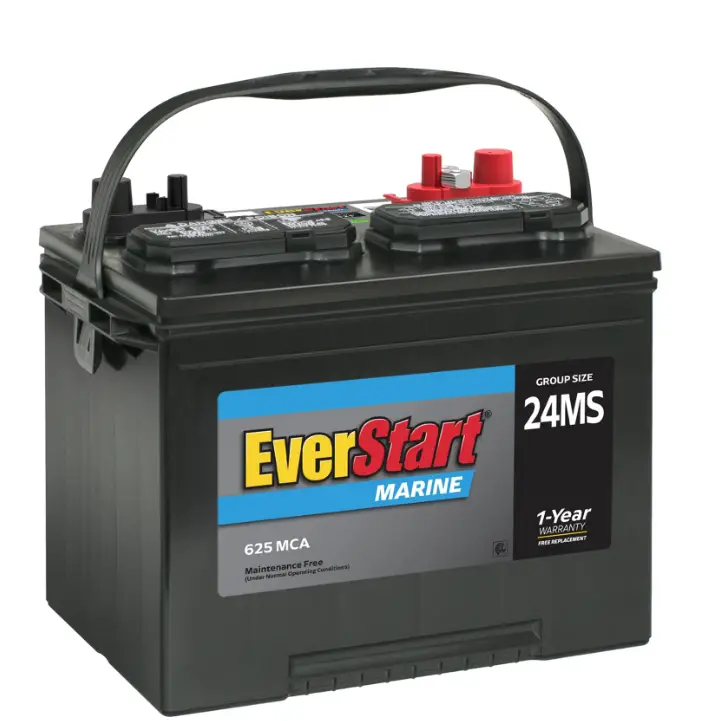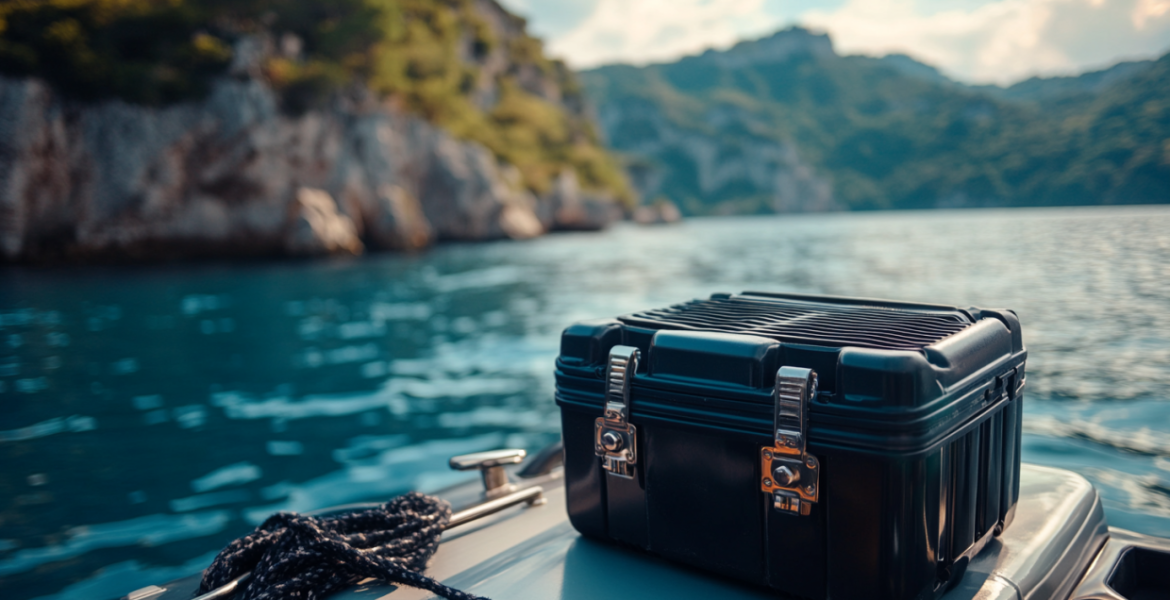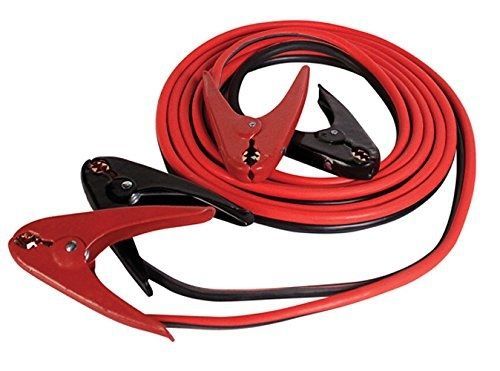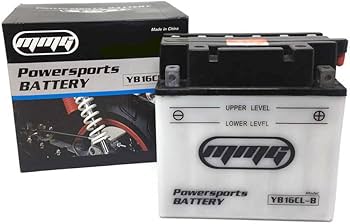
EverStart Lead Acid Marine Starting Battery, Group Size 24MS (12 Volt/625 MCA)*
- CCA rating can vary by location. See store for details
- 1 Year free replacement
- Free battery testing and installation at your local Walmart Auto Care Center.
- Marine cranking amps (CCA): 625
- Reserve capacity: 95 minutes
- Lead acid design: Flooded
- Price shown does not include the
$74.87
As I sit here on my dock, watching the sunset paint golden streaks across the water, I can’t help but reflect on how a seemingly small component like a marine battery has made such a tremendous difference in my boating experience. Five years ago, I was that guy at the marina with a dead battery and a boat full of disappointed friends. Today, I’m sharing what I’ve learned through trial, error, and countless hours researching the unsung hero of reliable boating: the Everstart 24MS Marine Starting Battery.
The Day My Battery Died (And Why It Matters)
It was supposed to be a perfect day on the water. Clear skies, gentle breeze, cooler packed with sandwiches and cold drinks. My buddies had driven three hours to join me for a day of fishing on my 21-foot center console. We pushed off from the dock, I turned the key, and… nothing. Just an anemic click that might as well have been my boat laughing at me.
That day taught me something crucial: your marine adventures are only as reliable as your starting battery. It doesn’t matter how well-maintained your engine is or how expensive your fishing gear might be—without reliable power, you’re going nowhere.
After that embarrassing incident, I dove headfirst into learning everything I could about marine batteries. What I discovered changed my entire approach to boat maintenance. Today, I’m sharing my comprehensive guide to the Everstart 24MS Marine Starting Battery—a solid, dependable workhorse that has become my go-to recommendation for fellow weekend warriors who need reliability without breaking the bank.
Understanding the Everstart 24MS: Specifications That Matter
Let’s get technical for a moment. The Everstart 24MS isn’t just any battery—it’s specifically designed for marine applications with specifications that directly impact your boating experience.
The Everstart 24MS delivers 550-600 Cold Cranking Amps (CCA), which represents the battery’s ability to start your engine in cold conditions. For perspective, this is substantial power for most recreational boats. When I upgraded from my previous generic battery to the Everstart 24MS, the difference in starting performance was immediately noticeable—even on those chilly spring mornings when we’re after the early catch.
Weight-wise, you’re looking at approximately 40-45 pounds—fairly standard for a battery in this class. Dimensionally, it fits the standard Group 24 battery box at roughly 10.25″ L x 6.75″ W x 8.75″ H. The reserve capacity hovers around 140 minutes, which has proven more than sufficient for my needs.
What these numbers don’t tell you is how this translates to real-world performance. In my experience, the Everstart 24MS strikes an excellent balance between power, reliability, and cost—a trifecta that’s surprisingly difficult to achieve in marine batteries.
Starting vs. Deep-Cycle: Why the Distinction Matters
One critical point of confusion for many boaters is understanding the difference between starting and deep-cycle batteries. The Everstart 24MS is primarily a starting battery, designed to deliver short, powerful bursts of energy to crank your engine.
I learned this distinction the hard way. During my second season, I mistakenly used a starting battery to power my trolling motor and electronics for an entire day of fishing. By afternoon, the battery was depleted, and we were calling for a tow back to the marina.
Starting batteries like the 24MS have thinner plates with more surface area, optimized to deliver high current for short periods. They’re not designed for the sustained, deep discharge cycles that trolling motors and electronics require. For those applications, you need a deep-cycle battery or a dual-purpose battery.
The Everstart 24MS excels at its primary function: reliably starting your engine time after time. If you need a battery for extended power applications, you’ll want to look at their deep-cycle options instead, or consider a dual-battery setup like I eventually installed on my boat.
Is the Everstart 24MS Right for Your Boat?
Not all boats have the same power requirements, and choosing the right battery involves considering several factors specific to your vessel and how you use it.
Boat Size and Engine Compatibility
In my experience, the Everstart 24MS is well-suited for small to medium-sized boats, typically ranging from 16 to 24 feet with outboard motors up to about 150 HP. My 21-foot center console with a 115 HP outboard starts reliably with the 24MS, even after sitting unused for a couple of weeks.
For larger boats with inboard/outboard configurations or multiple high-powered engines, you might need to consider the Everstart 27MS or even multiple batteries connected in parallel. The determining factor isn’t just boat length but engine size and starting requirements.
Typical Usage Patterns
How you use your boat significantly impacts battery selection. For day cruisers and fishing boats that go out for a few hours and return to dock, the 24MS provides more than enough starting power. Weekend warriors like me who take their boats out mainly on fair-weather days will find the 24MS perfectly adequate.
However, if you’re engaging in extended offshore trips, overnight excursions, or rely heavily on electronics while the engine isn’t running, you’ll need to supplement your setup with a dedicated deep-cycle battery.
Freshwater vs. Saltwater Considerations
The Everstart 24MS is designed to handle both freshwater and saltwater environments, but this comes with caveats based on my experience. The battery itself has good corrosion resistance with its sealed design, but the terminals require extra attention in saltwater applications.
After a season of saltwater use, I noticed slight corrosion building up on the terminals despite regular maintenance. I’ve found that applying a good quality terminal protector spray after each outing makes a significant difference in preventing salt-induced corrosion.
For those who exclusively boat in saltwater, especially in tropical climates with high humidity, more frequent inspection and maintenance of the terminals is essential to maximize battery life.
Real-World Performance: What to Expect
Marketing specifications are one thing, but how does the Everstart 24MS actually perform in day-to-day boating? After five seasons with various marine batteries, here’s my honest assessment.
Starting Reliability
The most important job of a starting battery is, well, starting your engine consistently. In this regard, the Everstart 24MS has proven remarkably reliable. Through hot summer days and cool fall mornings, my engine cranks with authority every time.
The 550-600 CCA rating proves more than sufficient for most recreational marine engines. Even when I’ve occasionally left my navigation lights on overnight (we’ve all done it), the battery retained enough power to start the engine the next morning—a testament to its robust reserve capacity.
Lifespan Expectations
Based on my experience and conversations with other boaters, you can expect 3-4 years of reliable service from the Everstart 24MS with proper maintenance in recreational use. This is comparable to other batteries in its price range and represents good value.
The battery shows minimal performance degradation during the first two seasons. By the third season, I noticed slightly slower cranking in colder conditions, though still more than adequate. By the end of the fourth season, while still functional, it was showing enough signs of aging that replacement became a consideration for the next season.
Weather and Temperature Performance
Marine batteries must perform across a wide temperature range, and the Everstart 24MS handles these variations admirably. In summer heat, when temperatures in my boat’s battery compartment easily exceed 100°F, the battery shows no signs of stress or fluid loss thanks to its sealed design.
Cold weather performance is where the CCA rating becomes crucial. During early spring and late fall outings when temperatures drop to the 40s, the 24MS still delivers consistent starting power, though I’ve noticed it takes slightly longer to turn over the engine compared to prime summer conditions.
Value Proposition: Cost vs. Performance
Let’s talk dollars and sense. Marine batteries range dramatically in price, from budget options to premium models costing several times more. Where does the Everstart 24MS fall on this spectrum?
Current Pricing
As of my last purchase, the Everstart 24MS typically retails between $85-115, depending on sales and location. Walmart is the primary retailer, as Everstart is their house brand for batteries manufactured by Johnson Controls (who also make batteries for other well-known brands).
This positions the 24MS as a mid-entry level option—not the cheapest on the market, but significantly more affordable than premium brands that can cost $200+ for comparable specifications.
Cost-Benefit Analysis
The value equation goes beyond just purchase price. In my experience, factoring in the typical 3-4 year lifespan, the Everstart 24MS costs roughly $25-30 per year of service—a reasonable investment for the reliability it provides.
Where the 24MS really shines is in the middle ground between budget batteries that might last only 1-2 seasons and premium options that cost significantly more for marginal performance improvements in typical recreational use.
For weekend boaters like me who use their boats 20-30 times per season, the Everstart 24MS hits a sweet spot of affordability and dependability that’s hard to beat.
Warranty Considerations
The Everstart 24MS comes with a 1-year free replacement warranty, which is standard for its price range. While some premium batteries offer longer warranties, I’ve found that battery failures typically occur either very early (manufacturing defects covered by the 1-year warranty) or after several years of use (beyond most warranty periods anyway).
In five years of recommending this battery to fellow boaters, I’ve only heard of one warranty claim, which was handled smoothly at the local Walmart. The simplicity of the warranty process adds to the overall value proposition—no complicated paperwork or shipping batteries back to manufacturers.
Installation and Maintenance: Keeping It Simple
One of the advantages of the Everstart 24MS is its straightforward installation and minimal maintenance requirements. Even for boaters with limited mechanical experience, managing this battery is relatively simple.
Installation Best Practices
Installing the 24MS is straightforward, but attention to detail makes a difference in performance and longevity. Here’s my process:
First, ensure your battery compartment is clean, dry, and properly ventilated. Marine environments are tough on equipment, and a clean installation area prevents premature corrosion.
When connecting terminals, I always start with the positive (red) cable first, then the negative (black). Ensure the connections are tight but not overtightened—you want a secure fit without stressing the terminal posts.
For added protection, I recommend terminal covers and using a battery box if one isn’t already installed in your boat. This prevents accidental shorts and provides additional protection from the elements.
Finally, make sure the battery is secured firmly to prevent movement while underway. Battery movement can damage terminals and internal components over time. Most boats have dedicated straps or holders, but if yours doesn’t, investing in a proper securing system is worthwhile.
Routine Maintenance
Though marketed as “maintenance-free,” all batteries benefit from some regular attention. Here’s my seasonal maintenance routine that has helped extend battery life:
Monthly during the season, I inspect the terminals for corrosion and clean them if necessary using a wire brush and baking soda solution. After cleaning, I apply a terminal protector spray to prevent future corrosion.
After each use in saltwater, I wipe down the battery with a damp cloth to remove any salt spray, focusing on the terminals and top surface where salt can accumulate.
I periodically check the battery’s charge status using a simple voltmeter. A reading below 12.4 volts indicates it’s time for a recharge, even if the battery is still starting the engine. Preventing deep discharge significantly extends battery life.
Proper Charging Techniques
Charging technique makes a substantial difference in battery longevity. I use a marine-specific smart charger that adjusts charging rates based on battery condition. These typically cost $50-80 but pay for themselves by extending battery life.
For routine maintenance charging, I connect the charger and let it run through its full cycle—usually including bulk, absorption, and float stages. This ensures a complete charge without overcharging, which can damage the battery.
After a day on the water, especially if I’ve used electronics heavily, I’ll often give the battery a maintenance charge overnight to ensure it’s fully restored for the next outing.
Seasonal Storage: Protecting Your Investment
Proper off-season storage is perhaps the single most important factor in extending battery life. I learned this lesson the expensive way after my first winter, when spring revealed a severely depleted battery that never quite recovered.
Winter Storage Protocol
My winter storage routine now includes these essential steps:
First, I fully charge the battery before removal from the boat. A battery should never go into storage partially discharged.
After removal, I clean the terminals thoroughly and apply a protective coating to prevent oxidation during storage.
I store the battery in a cool, dry location—ideally between 40-60°F. Extreme cold or heat accelerates self-discharge and can damage internal components.
Most importantly, I connect a quality float charger or battery maintainer designed for long-term storage. These devices provide just enough current to counter the battery’s natural self-discharge rate without overcharging.
Every month during storage, I check that the maintainer is functioning correctly and that the battery shows no signs of bulging, leaking, or other damage.
Spring Recommissioning
When boating season returns, I don’t simply reinstall the battery and hope for the best. Instead, I follow a recommissioning process:
I test the battery with a voltmeter to verify it’s holding a full charge (12.6V or higher).
Using a battery load tester (available at most auto parts stores), I verify the battery can handle a load without excessive voltage drop.
Before reinstallation, I clean the battery terminals again and apply fresh protective spray.
Once installed, I verify all connections are secure and protected from the elements.
This systematic approach has dramatically improved my batteries’ longevity compared to my early years of boating.
Comparing the Everstart 24MS to Alternatives
No battery exists in a vacuum, and understanding how the Everstart 24MS compares to alternatives helps put its value proposition in perspective.
Everstart 24MS vs. 27MS: Size and Power Differences
The most common comparison is between the 24MS and its larger sibling, the 27MS. The primary differences are physical size and capacity.
The 27MS is physically larger (approximately 12″ L x 6.75″ W x 9.5″ H compared to the 24MS’s 10.25″ L x 6.75″ W x 8.75″ H) and heavier by about 10 pounds.
In terms of performance, the 27MS typically offers 650-700 CCA compared to the 24MS’s 550-600 CCA, and a reserve capacity of about 170 minutes versus 140 minutes.
For most small to medium recreational boats, the 24MS provides sufficient power. I upgraded to the 27MS only when I moved to a larger boat with twin engines. For single-engine applications under 150HP, the extra cost and weight of the 27MS rarely justify the incremental performance increase.
Brand Comparisons: Premium vs. Value Options
Beyond size considerations, how does the Everstart compare to other brands?
In the premium segment, batteries from Optima, Interstate, and NOCO typically offer higher CCA ratings, longer warranties (often 3-5 years), and potentially longer lifespans of 5-7 years. However, they cost 2-3 times more than the Everstart.
In the budget segment, there are cheaper options, but in my experience and based on conversations with other boaters, these often last only 1-2 seasons at best, making them false economies.
The Everstart 24MS occupies a sweet spot where the quality-to-price ratio maximizes value for typical recreational boaters. Professional guides or commercial operators might justifiably opt for premium batteries, but for weekend warriors, the performance difference rarely justifies the additional cost.
Where to Buy and What to Expect
Purchasing options for the Everstart 24MS are straightforward but worth discussing to ensure you get the best value and freshest battery.
Retail Availability
As Walmart’s house brand, Everstart batteries are primarily available at Walmart stores nationwide. Some independent marine dealers may carry them, but Walmart is the main distribution channel.
In-store availability is generally good during boating season, though I’ve occasionally found them out of stock during peak season (typically May-June). The online inventory checker on Walmart’s website is reliable for confirming availability before making a trip.
Ensuring Battery Freshness
Battery age matters significantly. When purchasing, always check the manufacturing date stamp—typically a letter (month) and number (year) code on the battery. For example, “D3” would indicate April 2023.
I try to purchase batteries manufactured within the last six months, as batteries gradually lose charge even on the shelf. Walmart typically rotates inventory well, but it’s worth checking, especially in areas where boating is seasonal.
Core Charges and Recycling
When purchasing a new battery, you’ll typically pay a “core charge” of $5-15, which is refunded when you return your old battery. This system incentivizes proper recycling of lead-acid batteries, which contain materials harmful to the environment.
Most Walmart stores and auto parts retailers will accept old batteries for recycling, even if you didn’t purchase your new battery from them. The recycling process is simple—just hand over your old battery when purchasing a new one or return it separately with your receipt showing the core charge.
Real Boater Experiences: Beyond My Own
While my experience with the Everstart 24MS has been largely positive, I’ve made a point of gathering feedback from other boaters to provide a more comprehensive picture.
Collective Wisdom from the Marina
Among the dozen or so boaters at my marina using the Everstart 24MS, opinions are generally favorable. Common praise includes:
Reliable starting performance, even after periods of disuse
Good value for the price point
Widespread availability for replacement
Criticisms typically center around:
Terminal corrosion in saltwater environments requiring vigilant maintenance
Occasional quality inconsistencies between batteries
Shorter lifespan compared to premium brands (though acknowledged as a fair trade-off considering the price difference)
One interesting observation from a fishing guide who cycles through batteries quickly: he found that the manufacturing date significantly impacted performance. Batteries manufactured in the off-season (fall/winter) seemed to perform better than those made during peak production periods, possibly due to less rushed quality control.
Long-Term Performance Reports
Speaking with boaters who have used multiple Everstart batteries over the years reveals useful patterns. The most common lifecycle described is:
Years 1-2: Excellent performance with no noticeable degradation
Year 3: Slight reduction in cranking power, particularly in colder conditions
Year 4: Noticeable performance decline, though still functional for most applications
Year 5: Significant performance issues becoming common, with many boaters opting to replace proactively rather than risk failure
This lifecycle assumes proper maintenance and winter storage. Boaters who neglected these aspects reported significantly shorter useful lives, sometimes as little as 1-2 seasons.
Troubleshooting Common Issues
Even the best batteries can experience problems. Based on my experience and conversations with other boaters, here are solutions to common issues with the Everstart 24MS.
Slow Cranking
If your engine cranks more slowly than usual, first check the terminal connections. Loose or corroded connections are the most common culprit and are easily remedied with cleaning and tightening.
If connections are good, test the battery’s voltage. A healthy, fully charged battery should read about 12.6-12.8 volts at rest. Readings below 12.4V indicate a partial discharge that should be addressed with a proper charging cycle.
For batteries showing good voltage but poor cranking performance, a load test will reveal if the battery’s capacity has diminished. Most auto parts stores offer free battery testing services.
Premature Failure
In rare cases of premature failure (within the first year), the issue is usually manufacturing-related and covered by warranty. Take the battery to Walmart with your receipt for a replacement.
For failures outside the warranty period but earlier than expected, consider your charging habits. Both undercharging and overcharging significantly reduce battery life. Investing in a quality smart charger often resolves these issues.
Also examine your boat’s electrical system. Parasitic draws, alternator problems, or voltage regulator issues can all contribute to shortened battery life. If you’ve replaced multiple batteries with similar premature failure patterns, have a marine technician check your boat’s electrical system.
Physical Damage
Physical damage to the battery case should be addressed immediately. Any cracks, bulging, or leakage indicate potentially dangerous conditions that require battery replacement.
Slight bulging at the end of a hot day isn’t uncommon and usually subsides as the battery cools. However, persistent bulging indicates internal problems that typically require replacement.
The Environmental Angle: Responsible Ownership
As boaters, we have a special responsibility to protect the waters we enjoy. Battery selection, maintenance, and disposal all have environmental implications worth considering.
Recycling Best Practices
Lead-acid batteries are among the most successfully recycled products in America, with recovery rates exceeding 95%. The lead, plastic, and acid can all be reclaimed and reused in new batteries.
Always return your old batteries for recycling. Beyond the core charge incentive, proper recycling prevents hazardous materials from entering landfills and waterways.
Some facilities can recycle batteries with minimal environmental impact. When possible, ask where your retailer sends batteries for recycling and support businesses that partner with environmentally responsible recyclers.
Reducing Battery Consumption
The most environmentally friendly approach is extending battery life to reduce replacement frequency. Following the maintenance and storage protocols described earlier not only saves money but reduces environmental impact.
Consider a solar maintenance charger for off-season storage if your boat is kept somewhere with adequate sunlight. These can maintain battery charge without consuming grid electricity.
Making Your Final Decision
After thousands of words on specifications, performance, and maintenance, the decision comes down to your specific needs and circumstances. Here’s my framework for determining if the Everstart 24MS is right for you.
Ideal Use Cases
The Everstart 24MS is particularly well-suited for:
Weekend recreational boaters with vessels under 24 feet
Single-engine applications up to 150HP
Boaters seeking good value without premium pricing
Those with access to Walmart for warranty service if needed
Boaters willing to perform basic maintenance
When to Consider Alternatives
You might want to look at alternatives if:
You have a larger boat with higher power demands (consider the 27MS)
You frequently take extended trips far from shore (consider dual batteries or a dual-purpose battery)
You’re unwilling or unable to perform regular maintenance (premium maintenance-free options might be worth the extra cost)
You operate commercially or cannot risk any downtime (premium batteries with longer warranties provide additional peace of mind)
Conclusion: Reliability Without Breaking the Bank
After five seasons of boating, countless conversations with fellow enthusiasts, and more than a few lessons learned the hard way, my conclusion about the Everstart 24MS remains positive. It represents an excellent balance of performance, reliability, and value for typical recreational boaters.
Is it the absolute best marine battery on the market? No. Premium options with higher price tags do offer longer lifespans and more consistent performance. But when considering the complete value equation—purchase price, expected lifespan, reliability, and availability—the Everstart 24MS earns its place as a solid recommendation.
Your marine adventures are only as reliable as your starting battery, and the Everstart 24MS provides that reliability without demanding premium prices or extraordinary maintenance efforts. For weekend warriors who want to spend more time enjoying the water and less time worrying about their equipment, it’s a choice that makes sense.
As I wrap up this guide while watching the sunset from my boat—started reliably by an Everstart battery—I’m reminded that boating is about freedom, relaxation, and connection with nature. The best equipment choices are those that fade into the background, reliably doing their job while you focus on making memories. By that measure, the Everstart 24MS has earned its place in my boat, and perhaps in yours as well.




